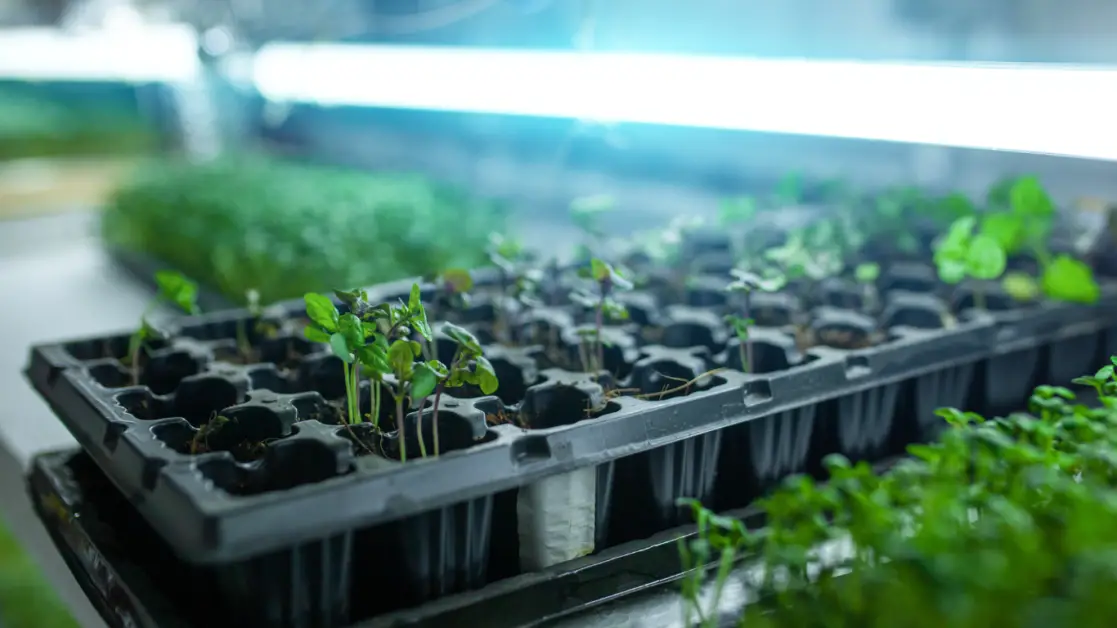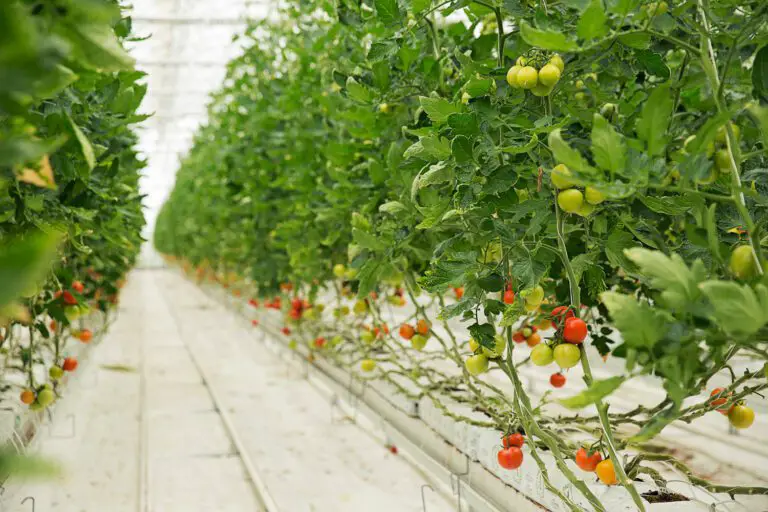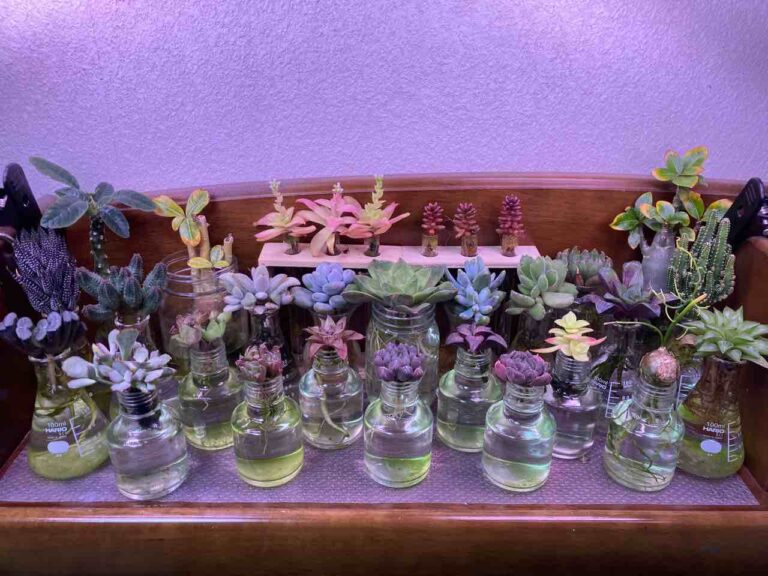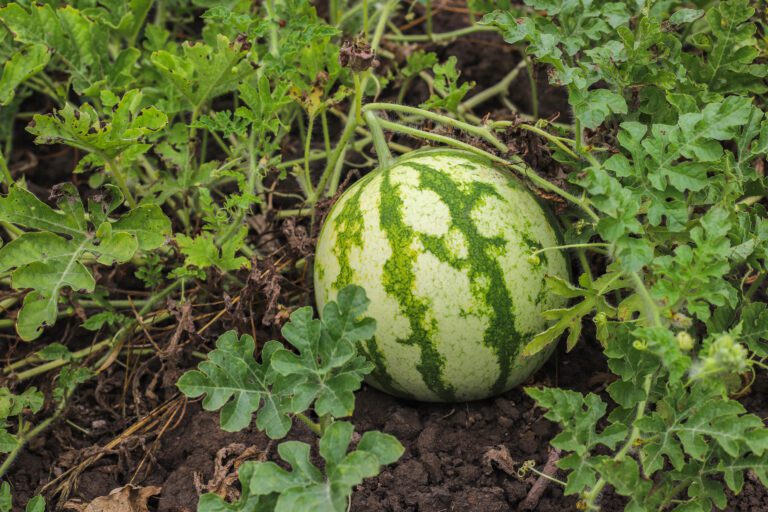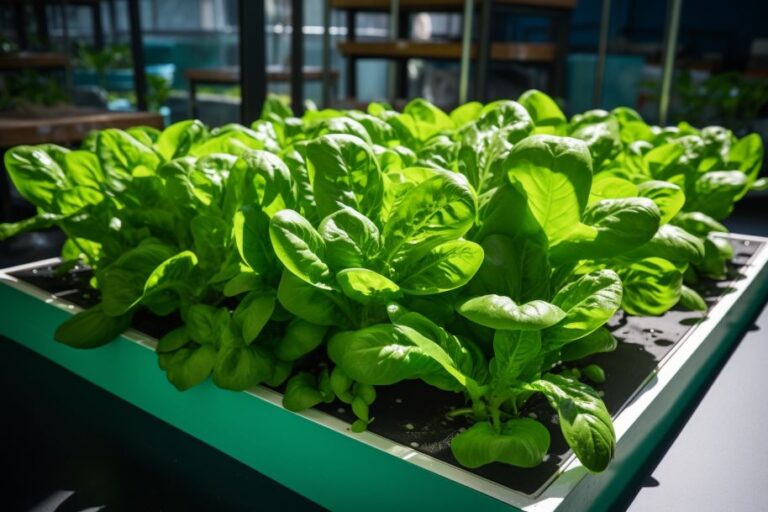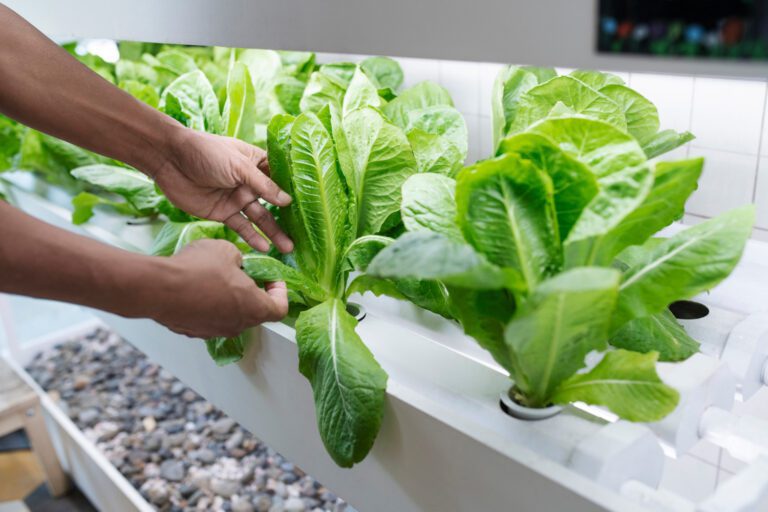Grow Lights and Heat Mats: How They Work Together to Boost Your Hydroponic Growth
What are Grow Lights and Heat Mats?
Grow lights and heat mats are essential tools for cultivating plants in hydroponic systems. Grow lights are artificial light sources designed to stimulate plant growth by providing the necessary light spectrum for photosynthesis. They are particularly beneficial when natural light is insufficient or unavailable, allowing plants to grow effectively indoors. Heat mats, on the other hand, are specially designed mats that provide consistent and controlled heat to the root zone of plants. This helps to promote healthy root development and enhance overall plant growth. Together, these tools play a crucial role in creating an optimal environment for plants to thrive in hydroponic systems.
• Grow lights are artificial light sources that mimic natural sunlight and provide the necessary light spectrum for photosynthesis.
• They are particularly useful in indoor gardening or hydroponic systems where there may be limited access to natural light.
• By providing adequate lighting, grow lights enable plants to undergo photosynthesis and produce energy for growth and development.
• Different types of grow lights, such as fluorescent, LED, or high-intensity discharge (HID) lamps, offer different spectrums of light for various stages of plant growth.
• Heat mats are specially designed mats that generate controlled heat to promote healthy root development in plants.
• The consistent warmth provided by heat mats accelerates germination and encourages robust root growth.
• Heat mats can help overcome challenges associated with cooler temperatures or inconsistent heating in indoor growing environments.
What is hydroponic growth?
Hydroponic growth is a modern method of cultivating plants without the use of soil. Instead, plants are grown in nutrient-rich water solutions, supporting their growth through the direct delivery of essential nutrients. This innovative technique offers several advantages over traditional soil-based gardening.
One key benefit of hydroponic growth is its ability to maximize limited space. By eliminating the need for soil, plants can be grown in smaller areas, making hydroponics ideal for urban gardening or indoor cultivation. Additionally, the controlled environment of hydroponic systems allows for precise nutrient management, resulting in faster growth rates and increased yields compared to traditional methods.
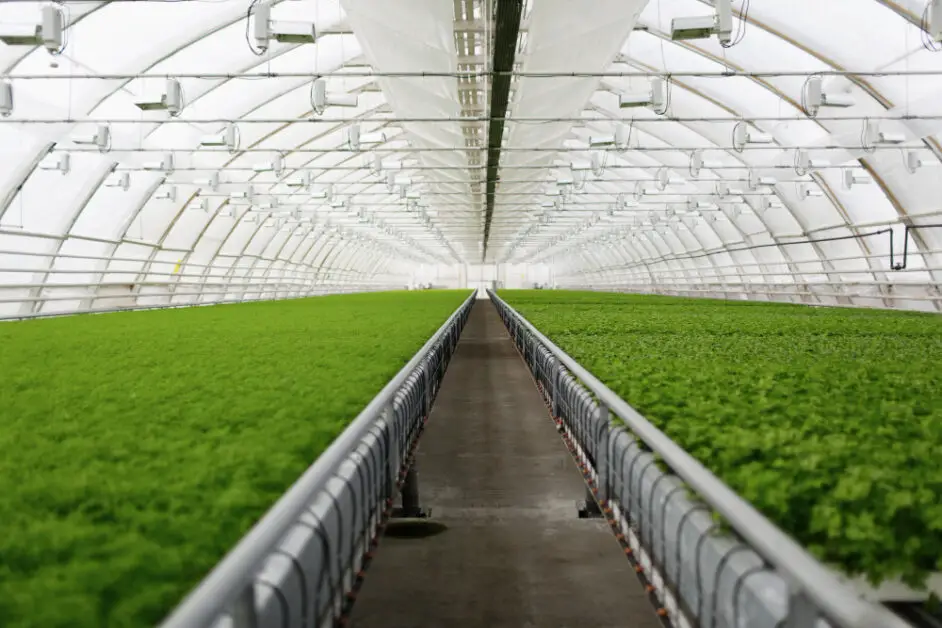
Hydroponic growth also offers environmental advantages. Without the use of soil, the risk of soilborne diseases and pests is minimized, reducing the need for chemical pesticides and herbicides. Furthermore, water usage is significantly reduced in hydroponic systems, as the nutrient solution is recirculated and can be reused, minimizing waste and conserving resources.
Overall, hydroponic growth presents a unique and efficient approach to cultivating plants. By harnessing the power of nutrient-rich water solutions, this method offers numerous benefits, including space optimization, enhanced plant growth, and reduced environmental impact. As gardening enthusiasts continue to explore innovative techniques, hydroponics proves to be an exciting avenue for maximizing plant growth and contributing to sustainable agricultural practices.
• Hydroponic growth is a modern method of cultivating plants without soil, using nutrient-rich water solutions.
• It maximizes limited space by eliminating the need for soil, making it ideal for urban gardening or indoor cultivation.
• The controlled environment of hydroponic systems allows for precise nutrient management, resulting in faster growth rates and increased yields compared to traditional methods.
• Hydroponics minimizes the risk of soilborne diseases and pests, reducing the need for chemical pesticides and herbicides.
• Water usage is significantly reduced in hydroponic systems as the nutrient solution is recirculated and can be reused, conserving resources.
• Overall, hydroponic growth offers space optimization, enhanced plant growth, and reduced environmental impact.
Why is it important to boost hydroponic growth?
Boosting hydroponic growth is crucial for gardeners and enthusiasts seeking optimal plant development and maximum yield. By enhancing growth in a controlled environment, hydroponic systems offer numerous advantages over traditional soil-based gardening methods. Firstly, boosting hydroponic growth allows for year-round cultivation, eliminating the limitations imposed by seasons and weather conditions. This ensures a consistent and continuous supply of fresh produce, making it an attractive option for commercial farming and home gardening alike. Moreover, hydroponic systems require significantly less water compared to conventional agriculture, making them more sustainable and environmentally friendly. By optimizing growth in these systems, we can maximize the efficient use of resources, minimizing water waste and reducing our ecological footprint.
In addition to sustainable agriculture, boosting hydroponic growth enables gardeners to overcome challenges associated with limited space. Whether one is cultivating plants in small apartments or utilizing compact urban areas, hydroponic systems provide opportunities for vertical farming, allowing for the efficient use of space and the production of larger volumes of crops. This is particularly beneficial for urban areas where arable land is scarce. By maximizing growth in hydroponic systems, gardeners can make the most of limited space and create thriving gardens in non-traditional settings.
Overall, increasing hydroponic growth is vital for ensuring year-round cultivation, conserving water resources, and maximizing space efficiency. By optimizing plant growth in hydroponic systems, gardeners can enjoy a sustainable and bountiful harvest, regardless of location or time of year.
• Boosting hydroponic growth allows for year-round cultivation, eliminating the limitations imposed by seasons and weather conditions.
• Hydroponic systems require significantly less water compared to conventional agriculture, making them more sustainable and environmentally friendly.
• Optimizing growth in hydroponic systems maximizes the efficient use of resources, minimizing water waste and reducing our ecological footprint.
• Hydroponic systems provide opportunities for vertical farming, allowing for the efficient use of space and the production of larger volumes of crops.
• Maximizing growth in hydroponic systems enables gardeners to create thriving gardens in non-traditional settings where arable land is scarce.
Here is a table that summarizes the necessesity of hydroponic growth:
| Importance | Explanation |
|---|---|
| Faster Growth | Explanation: Hydroponic systems provide a controlled environment with optimal nutrient availability. This accelerates plant growth compared to traditional soil-based methods. |
| Increased Yield | Explanation: By optimizing nutrient delivery and environmental conditions, hydroponics can result in higher crop yields per unit area, maximizing production. |
| Water Conservation | Explanation: Hydroponic systems use significantly less water than traditional soil farming, as they recycle and recirculate water efficiently, contributing to water conservation. |
| Space Efficiency | Explanation: Hydroponics allows for vertical farming and other space-efficient techniques, making it possible to grow more crops in a smaller footprint, crucial in urban or limited space scenarios. |
| Nutrient Control | Explanation: Hydroponic systems enable precise control over nutrient concentrations, ensuring plants receive the ideal balance of nutrients for optimal growth and health. |
| Reduced Pest and Disease Risk | Explanation: Hydroponic systems can minimize exposure to soil-borne pests and diseases, reducing the need for pesticides and creating a cleaner, healthier growing environment. |
| Year-Round Production | Explanation: Hydroponics allows for year-round cultivation, independent of seasonal changes, providing a continuous and reliable supply of fresh produce. |
| Consistent Crop Quality | Explanation: The controlled conditions in hydroponics result in consistent crop quality, meeting high standards for flavor, texture, and appearance in harvested produce. |
| Environmental Sustainability | Explanation: Hydroponics, when practiced sustainably, can have lower environmental impacts, such as reduced use of pesticides, minimized water usage, and decreased carbon footprint. |
| Research and Innovation | Explanation: Hydroponics provides a platform for research and innovation in agriculture, leading to the development of new techniques, technologies, and crop varieties. |
The role of grow lights in hydroponic growth.
The role of grow lights in hydroponic growth is crucial for providing plants with the necessary light energy they need for photosynthesis. In a hydroponic system, where plants are grown without soil, grow lights serve as a substitute for natural sunlight. They emit specific wavelengths of light, primarily in the red and blue spectrum, which are essential for plant growth and development.
Grow lights enable gardeners to have complete control over the light exposure their plants receive, regardless of environmental conditions. By adjusting the intensity and duration of light, growers can optimize photosynthesis and maximize plant growth. This is especially beneficial in areas with limited access to sunlight or during the winter months when daylight hours are reduced. Furthermore, by using grow lights, gardeners can extend the growing season and even cultivate plants indoors year-round.
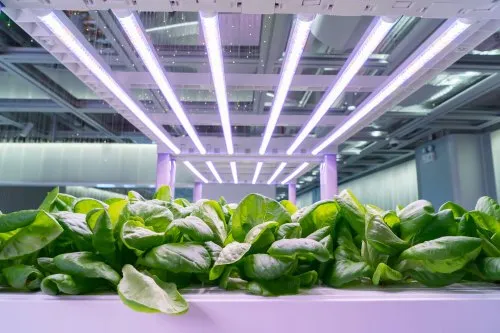
There are different types of grow lights available for hydroponic systems, including fluorescent, high-intensity discharge (HID), and light-emitting diode (LED) lights. Each type has its advantages and disadvantages, such as varying energy efficiency, light spectrum, and lifespan. Choosing the right type of grow light depends on factors like the specific plants being grown, the size of the growing area, and budget considerations. It is important to select a grow light that provides the adequate intensity and spectrum for the plants’ specific needs in order to promote optimal growth and yields.
• Grow lights play a crucial role in hydroponic growth by providing plants with the necessary light energy for photosynthesis.
• They serve as a substitute for natural sunlight in hydroponic systems where plants are grown without soil.
• Grow lights emit specific wavelengths of light, primarily red and blue spectrum, which are essential for plant growth and development.
• By adjusting the intensity and duration of light, growers can optimize photosynthesis and maximize plant growth regardless of environmental conditions.
• Grow lights are especially beneficial in areas with limited access to sunlight or during winter months when daylight hours are reduced.
• Gardeners can extend the growing season and cultivate plants indoors year-round using grow lights.
• Different types of grow lights available for hydroponic systems include fluorescent, HID, and LED lights.
• Each type has its advantages and disadvantages such as varying energy efficiency, light spectrum, and lifespan.
• The choice of grow light depends on factors like the specific plants being grown, size of the growing area, and budget considerations.
• It is important to select a grow light that provides adequate intensity and spectrum for optimal growth and yields.
The role of heat mats in hydroponic growth.
Heat mats play a crucial role in promoting optimal growth conditions for hydroponic plants. These mats, also known as seedling heat mats or propagation mats, provide a controlled and consistent source of warmth to the root zone. By maintaining a stable and slightly elevated temperature, heat mats encourage faster germination, root development, and overall plant growth.
The primary function of heat mats is to create an optimal environment for the germination of seeds and the rooting of cuttings. By increasing the temperature around the roots, these mats stimulate biological processes and metabolic activity, which in turn accelerates plant growth. Heat mats are particularly beneficial for plants that require higher soil temperatures for successful germination, such as tropical and warm-season crops. They can also be used to overcome the challenges of cold or fluctuating temperatures in indoor hydroponic setups, providing a consistent and suitable environment for plant propagation.
In addition to promoting germination and root development, heat mats can also enhance nutrient uptake and nutrient availability for hydroponic plants. The warmth generated by the mats helps to increase the solubility and mobility of essential nutrients in the growing medium, allowing plants to absorb and utilize them more efficiently. This improved nutrient uptake can result in healthier, more vigorous plants with increased yields. Furthermore, heat mats can assist in preventing the occurrence of root diseases and fungal infections, as the warmth discourages the growth of pathogens and promotes the proliferation of beneficial microorganisms.
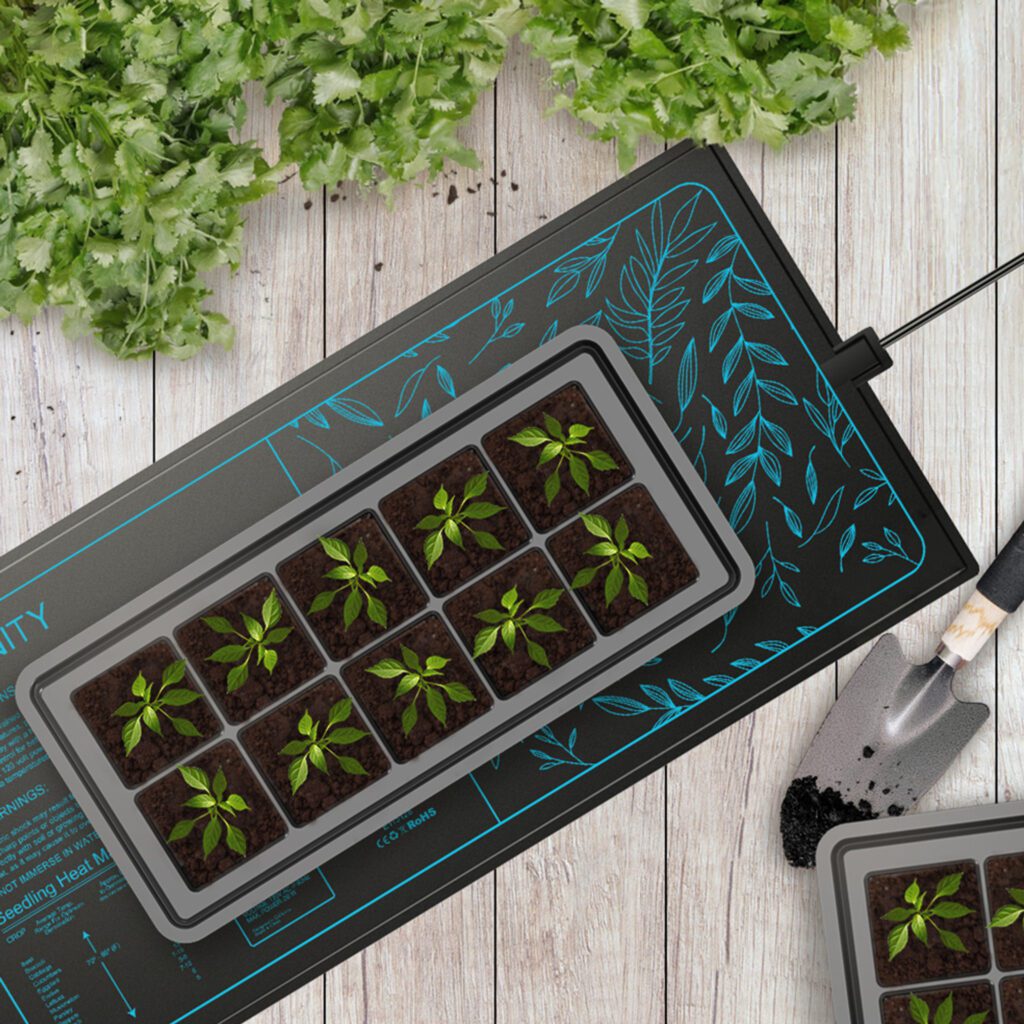
Overall, heat mats are an indispensable tool for hydroponic growers seeking to maximize plant growth and yield. By providing a steady and controlled source of warmth to the root zone, these mats create an optimal environment for seed germination, root development, and nutrient absorption. Whether you’re a novice hydroponic gardener or a seasoned horticulturist, incorporating heat mats into your system can significantly enhance the success of your crops and ensure a bountiful and thriving harvest.
• Heat mats provide a controlled and consistent source of warmth to the root zone in hydroponic growth.
• They encourage faster germination, root development, and overall plant growth.
• Heat mats are particularly beneficial for plants that require higher soil temperatures for successful germination.
• They can overcome the challenges of cold or fluctuating temperatures in indoor hydroponic setups.
• Heat mats enhance nutrient uptake and availability for hydroponic plants.
• The warmth generated by heat mats increases the solubility and mobility of essential nutrients in the growing medium.
• Improved nutrient uptake results in healthier, more vigorous plants with increased yields.
• Heat mats help prevent root diseases and fungal infections by discouraging pathogen growth and promoting beneficial microorganisms.
Overall, incorporating heat mats into a hydroponic system significantly enhances crop success and ensures a bountiful harvest.
How do grow lights work?
Grow lights are artificial light sources designed to replicate the spectrum and intensity of sunlight. They are crucial in hydroponic systems because they provide the necessary light energy for photosynthesis to occur in plants. When natural sunlight is limited or unavailable, grow lights become an essential tool for indoor gardening.
There are various types of grow lights available, each with its own advantages and considerations. The most commonly used types include fluorescent lights, high-intensity discharge (HID) lights, and light-emitting diodes (LEDs). Fluorescent lights are cost-effective and efficient for small-scale hydroponic setups. HID lights, such as metal halides or high-pressure sodium lights, generate a significant amount of heat and have a high light output, making them suitable for larger indoor gardens. LEDs, on the other hand, are energy-efficient, long-lasting, and emit light in specific wavelengths that can be tailored to meet the plant’s needs at different stages of growth. By understanding how each type of grow light works, hydroponic gardeners can select the most suitable option to optimize plant growth.
• Grow lights are artificial light sources designed to replicate sunlight for indoor gardening.
• They provide the necessary light energy for photosynthesis in plants when natural sunlight is limited or unavailable.
• There are various types of grow lights available, including fluorescent lights, HID lights, and LEDs.
• Fluorescent lights are cost-effective and efficient for small-scale hydroponic setups.
• HID lights generate a significant amount of heat and have a high light output, making them suitable for larger indoor gardens.
• LEDs are energy-efficient, long-lasting, and emit specific wavelengths that can be tailored to meet the plant’s needs at different growth stages.
• Understanding how each type of grow light works helps hydroponic gardeners select the most suitable option.
Different types of grow lights.
There are several different types of grow lights available that can enhance plant growth in hydroponic systems. One popular option is fluorescent grow lights. These lights are energy-efficient and emit a cool, white light that closely mimics natural sunlight. They are ideal for small-scale hydroponic setups or for providing supplemental lighting to specific plants.
Another type of grow light is the high intensity discharge (HID) light. HID lights produce a high intensity of light and are commonly used in larger-scale hydroponic operations. They come in two varieties: metal halide (MH) lights, which emit a blue light spectrum that promotes vegetative growth, and high pressure sodium (HPS) lights, which emit a red and orange light spectrum that enhances flowering and fruiting stages.
LED grow lights are also gaining popularity among hydroponic gardeners. These lights are highly efficient and emit a specific wavelength of light that can be customized to meet the specific needs of plants at different stages of growth. LED lights are long-lasting and produce less heat, making them a safe and energy-efficient option for hydroponic systems.
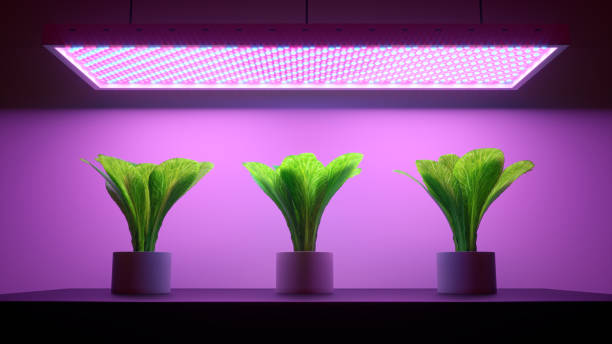
Each type of grow light has its own advantages and disadvantages, so it’s important to consider factors such as cost, energy consumption, and the specific needs of your plants when choosing the right grow light for your hydroponic system.
• Fluorescent grow lights are energy-efficient and emit a cool, white light that mimics natural sunlight
• Ideal for small-scale hydroponic setups or providing supplemental lighting to specific plants
• High intensity discharge (HID) lights produce a high intensity of light and are commonly used in larger-scale operations
• Metal halide (MH) lights emit a blue light spectrum that promotes vegetative growth
• High pressure sodium (HPS) lights emit a red and orange light spectrum that enhances flowering and fruiting stages
• LED grow lights are highly efficient and customizable to meet the specific needs of plants at different growth stages
• LED lights are long-lasting, produce less heat, and are safe for hydroponic systems
• Consider factors such as cost, energy consumption, and plant requirements when choosing the right grow light
Benefits of using grow lights in hydroponic systems.
Grow lights play a crucial role in hydroponic systems, as they provide essential light energy to plants. One of the main benefits of using grow lights in hydroponic systems is that they allow for year-round cultivation. By simulating natural sunlight, these lights ensure that plants receive consistent and optimal levels of light for growth, regardless of the season or climate. This means that gardening enthusiasts can enjoy a continuous harvest and have greater control over their plant’s growth cycle.
Another benefit of using grow lights is the ability to customize the light spectrum. Different types of plants have varying light requirements at different stages of growth. Grow lights can be adjusted to emit specific wavelengths of light, such as red, blue, or a combination of both, to meet the specific needs of plants. This customization allows for better photosynthesis, increased growth rates, and improved overall plant health. Additionally, by using energy-efficient LED grow lights, growers can save on electricity costs while still providing the necessary light intensity for plant growth.
• Year-round cultivation: Grow lights allow for continuous cultivation regardless of the season or climate.
• Consistent and optimal light levels: By simulating natural sunlight, grow lights ensure that plants receive consistent and optimal levels of light for growth.
• Continuous harvest: With grow lights, gardening enthusiasts can enjoy a continuous harvest throughout the year.
• Greater control over plant growth cycle: Grow lights provide greater control over the growth cycle of plants, allowing growers to manipulate factors such as flowering and fruiting times.
• Customizable light spectrum: Grow lights can be adjusted to emit specific wavelengths of light to meet the specific needs of different types of plants at different stages of growth.
• Improved photosynthesis and plant health: The customization of grow lights allows for better photosynthesis, increased growth rates, and improved overall plant health.
• Energy efficiency: LED grow lights are energy-efficient options that help growers save on electricity costs while still providing the necessary light intensity for plant growth.
The table shows us the benefits of grow lights in hydroponics:
| Benefit | Explanation |
|---|---|
| Year-Round Cultivation | Enables consistent plant growth regardless of season. |
| Controlled Light Spectrum | Provides tailored light for different growth stages. |
| Enhanced Photosynthesis | Stimulates optimal conditions for efficient plant growth. |
| Increased Crop Yields | Promotes higher production in limited space. |
| Precision and Efficiency | Allows targeted light application, reducing energy waste. |
| Adaptability to Indoor Spaces | Ideal for urban farming and locations with limited sunlight. |
| Shortened Crop Growth Cycles | Accelerates growth, reducing time to harvest. |
| Customization for Plant Species | Allows adjusting light conditions for specific crops. |
| Consistent Crop Quality | Ensures uniformity in flavor, texture, and appearance. |
| Research and Experimentation | Facilitates controlled studies in plant growth. |
How do heat mats work?
Heat mats, also known as propagation mats or seedling mats, are essential tools for promoting optimal plant growth in hydroponic systems. These mats consist of a heating element encased in a waterproof material, which provides a consistent source of gentle heat to the plants. The heat is evenly distributed across the mat’s surface, creating a warm and cozy environment for the roots to thrive.
Heat mats work by delivering a controlled amount of heat to the root zone of the plants. This heat stimulates root growth and increases nutrient uptake, resulting in healthier and more vigorous plants. The warm temperatures provided by the mats mimic the natural conditions that plants would experience in the soil, promoting faster germination, increased root development, and enhanced overall growth. Additionally, heat mats help to create a microclimate around the plants, protecting them from cold or fluctuating temperatures, which can be detrimental to their growth.
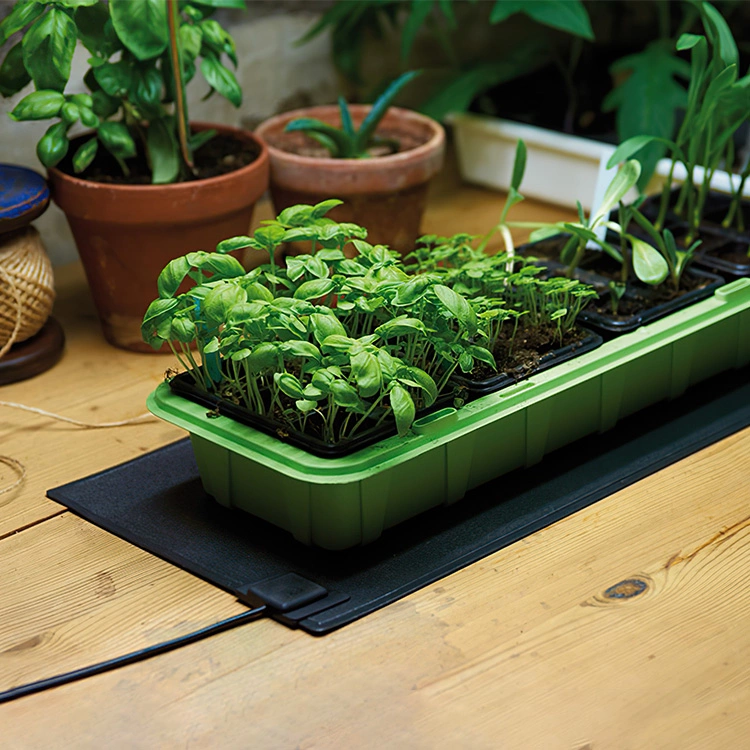
In hydroponic systems, heat mats are typically placed directly beneath the tray or container holding the plants. This allows the heat to radiate from the bottom, warming the root zone and creating an optimal growing environment. It is important to choose the correct size of heat mat to ensure that it covers the entire surface area of the container, providing consistent heat distribution. Additionally, it is crucial to monitor the temperature closely using a thermostat or temperature gauge to prevent overheating, as excessive heat can damage the roots. Overall, heat mats are valuable tools in hydroponic gardening, promoting healthy plant growth and maximizing the potential of your hydroponic setup.
• Heat mats consist of a heating element encased in a waterproof material
• The heat is evenly distributed across the mat’s surface, creating a warm environment for roots
• They deliver controlled heat to the root zone, stimulating growth and increasing nutrient uptake
• Mimics natural conditions, promoting faster germination and enhanced overall growth
• Creates a microclimate around plants, protecting them from cold or fluctuating temperatures
• Placed directly beneath the tray or container holding plants in hydroponic systems
• Ensures consistent heat distribution by choosing the correct size of heat mat
• Temperature should be monitored closely to prevent overheating and damage to roots
• Valuable tool in hydroponic gardening for healthy plant growth and maximizing potential
Benefits of using heat mats in hydroponic systems.
Heat mats are a valuable tool in hydroponic systems as they provide a consistent and controlled source of bottom heat for plant roots. This is especially beneficial for plants that require warmer soil temperatures for optimal growth. By placing the heat mats underneath the plants, the heat is directed directly to the root zone, promoting faster and healthier root development.
One of the key benefits of using heat mats in hydroponic systems is the ability to create an ideal environment for seed germination. The warmth produced by the mats helps to stimulate seed germination and encourages young seedlings to establish strong root systems. This is particularly advantageous for starting plants from seeds, as it can significantly improve germination rates and reduce the time required for seedlings to emerge. Additionally, heat mats provide a constant and uniform temperature, ensuring that all seedlings receive the same level of warmth, which promotes uniform growth and reduces the risk of temperature-related stress or diseases.
• Heat mats provide a consistent and controlled source of bottom heat for plant roots
• Placing the heat mats underneath the plants directs the heat directly to the root zone, promoting faster and healthier root development
• Heat mats create an ideal environment for seed germination by stimulating seed germination and encouraging strong root systems in young seedlings
• Improved germination rates and reduced time required for seedlings to emerge are benefits of using heat mats for starting plants from seeds
• Heat mats provide a constant and uniform temperature, ensuring all seedlings receive the same level of warmth
• Uniform growth is promoted by providing a consistent temperature with heat mats, reducing the risk of temperature-related stress or diseases.
The table shows more information about the advantages of heat mats in hydroponics growth:
| Benefit | Explanation |
|---|---|
| Root Zone Temperature Control | Maintains optimal root temperature for enhanced nutrient uptake. |
| Accelerated Germination | Speeds up seed germination for quicker and uniform seedling growth. |
| Faster Seedling Growth | Stimulates rapid and healthy development of young seedlings. |
| Extended Growing Season | Enables year-round cultivation by countering cold temperatures. |
| Improved Nutrient Uptake | Enhances nutrient absorption with optimal root zone temperatures. |
| Prevention of Temperature Stress | Protects plants from stress during colder periods. |
| Enhanced Root Development | Promotes vigorous root growth for overall plant vitality. |
| Propagation Support | Creates a favorable environment for successful cuttings/clones. |
| Uniform Growth Across Plants | Contributes to consistent growth and maturity across the crop. |
| Energy Efficiency | Efficiently heats the root zone, minimizing energy consumption. |
| Improved Crop Yield and Quality | Collective benefits lead to enhanced yield and crop quality. |
Compatibility of grow lights and heat mats in hydroponic systems.
When it comes to hydroponic systems, the compatibility between grow lights and heat mats is an important consideration for ensuring optimal plant growth. Both of these components play a crucial role in providing the right conditions for plants to thrive, and when used together effectively, they can enhance the overall productivity of the system.
Grow lights are essential in hydroponic setups as they serve as a substitute for natural sunlight. They emit specific wavelengths of light that plants need for photosynthesis and growth. Heat mats, on the other hand, provide consistent and controlled warmth to the root zone of the plants. This helps stimulate root development and ensures that the plants receive the necessary warmth for proper nutrient uptake.
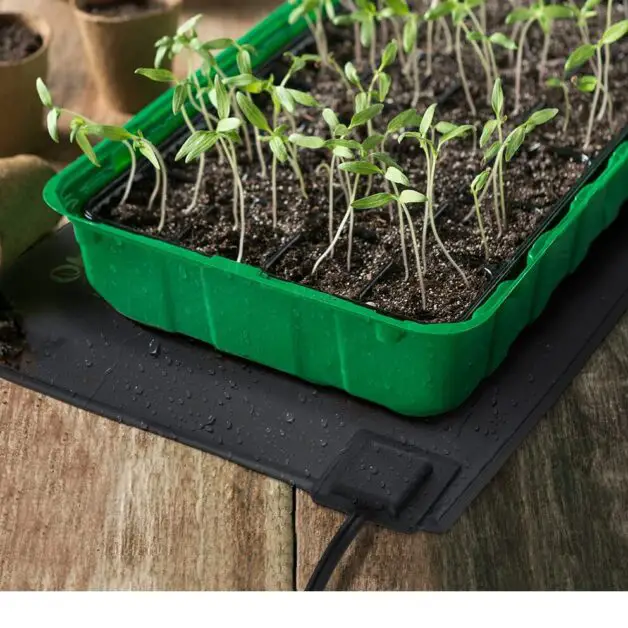
When it comes to compatibility, it is important to ensure that the heat mats used in the system do not interfere with the function of grow lights. Excessive heat from the mats can lead to increased temperature levels, potentially affecting the performance and efficiency of the lights. It is crucial to strike a balance between providing adequate heat and maintaining the optimal temperature range for both the plants and the lights. Additionally, proper positioning of the grow lights and heat mats within the hydroponic system can maximize their effectiveness and minimize any potential negative impacts.
• Grow lights and heat mats are both crucial components in hydroponic systems
• Grow lights provide the necessary light wavelengths for photosynthesis and growth
• Heat mats stimulate root development and ensure proper nutrient uptake
• Compatibility between grow lights and heat mats is important for optimal plant growth
• Excessive heat from the mats can affect the performance of grow lights
• Striking a balance between providing adequate heat and maintaining optimal temperature range is essential
• Proper positioning of grow lights and heat mats within the system can maximize their effectiveness
How do grow lights and heat mats work together?
Grow lights and heat mats are two essential components that work together to create optimal conditions for hydroponic growth. Grow lights provide the necessary artificial light for plants to undergo photosynthesis, while heat mats maintain a consistent and ideal temperature for root development. By combining these two technologies, gardeners can achieve remarkable results in their hydroponic systems.
When grow lights and heat mats are used together, they create a harmonious environment that promotes healthy plant growth. Grow lights mimic the sun’s natural spectrum, providing plants with the right wavelengths of light for photosynthesis. In combination with heat mats, which maintain a steady and specific temperature range, plants receive the optimal conditions needed to thrive. By balancing light and heat, growers can achieve faster growth rates, increased yields, and healthier, more robust plants.
This symbiotic relationship between grow lights and heat mats is particularly beneficial during the germination and early seedling stages. Heat mats ensure that the root zone stays warm, which accelerates germination and promotes rapid root development. As the seedlings emerge, the grow lights provide the necessary light energy for photosynthesis, allowing the plants to produce energy and grow vigorously. By working together, grow lights and heat mats create the ideal environment for plants to flourish in hydroponic systems.
• Grow lights provide artificial light for plants to undergo photosynthesis
• Heat mats maintain a consistent and ideal temperature for root development
• Combining grow lights and heat mats creates optimal conditions for hydroponic growth
• Grow lights mimic the sun’s natural spectrum, providing plants with the right wavelengths of light for photosynthesis
• Heat mats maintain a steady and specific temperature range, promoting faster growth rates and increased yields
• The symbiotic relationship between grow lights and heat mats is particularly beneficial during germination and early seedling stages
• Heat mats accelerate germination and promote rapid root development
• Grow lights provide necessary light energy for photosynthesis as seedlings emerge
• Together, grow lights and heat mats create an ideal environment for plants to flourish in hydroponic systems.
Optimal placement of grow lights and heat mats in hydroponic systems.
Optimal placement of grow lights and heat mats in hydroponic systems plays a crucial role in maximizing plant growth and overall efficiency. When it comes to grow lights, positioning them at the appropriate height above the plant canopy is essential. Generally, grow lights should be placed between 6 to 12 inches above the plants, allowing them to receive the optimum amount of light without causing heat stress or light burn. It is crucial to adjust the height as the plants grow, maintaining the ideal distance between the light source and the plants’ tops.
Additionally, the layout of the grow lights should ensure uniform light distribution throughout the entire hydroponic system. This can be achieved by strategically positioning the lights at different angles or using reflectors to redirect light towards areas with lower intensity. By avoiding dark spots and ensuring consistent light coverage, plants can photosynthesize more efficiently, leading to better growth rates and increased yields.
Similarly, heat mats should be placed beneath the hydroponic trays or containers in a way that promotes root health and growth. Heat mats provide warmth to the roots, which accelerates metabolism and improves nutrient uptake. To achieve optimal results, heat mats should cover the entire surface area of the tray or container. However, it is essential to avoid overheating by using a thermostat or temperature controller to maintain an ideal root temperature specific to the plant species being cultivated.
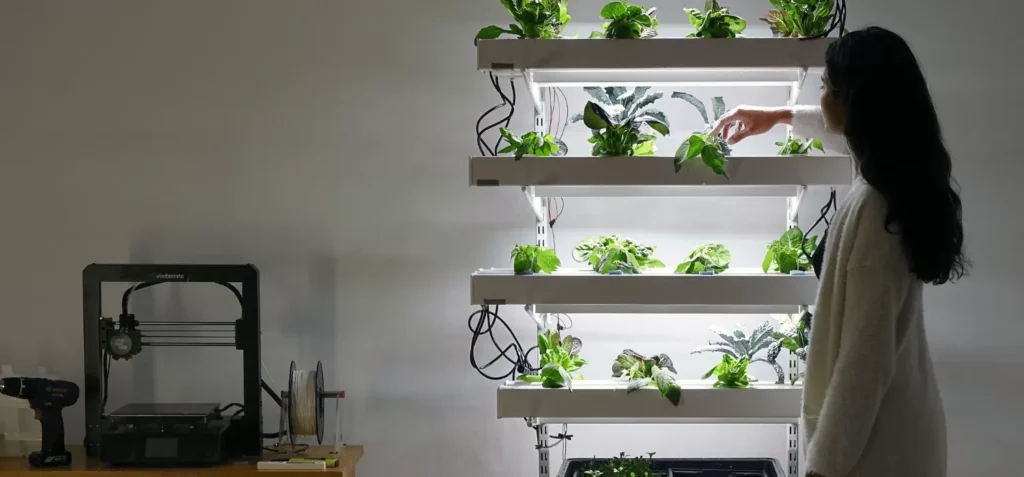
Overall, the optimal placement of grow lights and heat mats in hydroponic systems is crucial for ensuring balanced light distribution and promoting healthy roots. By following these guidelines, gardening enthusiasts can create an ideal environment for their plants, leading to thriving hydroponic growth.
• Grow lights should be positioned 6 to 12 inches above the plants to provide optimal light without causing heat stress or light burn.
• Adjust the height of grow lights as plants grow to maintain the ideal distance between the light source and plant tops.
• Position grow lights strategically to ensure uniform light distribution throughout the hydroponic system.
• Use reflectors or adjust angles of grow lights to redirect light towards areas with lower intensity, avoiding dark spots.
• Consistent light coverage promotes efficient photosynthesis, leading to better growth rates and increased yields.
• Heat mats should be placed beneath hydroponic trays or containers to promote root health and growth.
• Heat mats accelerate metabolism and improve nutrient uptake by providing warmth to the roots.
• Ensure that heat mats cover the entire surface area of trays or containers for optimal results.
• Use a thermostat or temperature controller to avoid overheating and maintain an ideal root temperature specific for each plant species being cultivated.
How do grow lights and heat mats enhance plant growth?
The use of grow lights and heat mats in hydroponic systems can significantly enhance plant growth and productivity. Grow lights simulate natural sunlight, providing the necessary light spectrum for photosynthesis, while heat mats create optimal root zone temperatures.
Grow lights play a crucial role in hydroponic growth by providing the appropriate spectrum and intensity of light. They emit wavelengths that are essential for plant growth, such as blue and red light. Blue light promotes vegetative growth, while red light stimulates flowering and fruiting. By adjusting the light spectrum, growers can manipulate plant growth and development to suit their specific needs. Additionally, grow lights enable year-round cultivation by compensating for inadequate natural light in indoor environments.
Heat mats are equally important in promoting optimal plant growth in hydroponic systems. They help maintain consistent and ideal root zone temperatures, which is essential for nutrient uptake and overall plant health. Heat mats warm the substrate and stimulate root growth, ensuring that plants have access to vital nutrients. This not only accelerates plant growth but also enhances nutrient absorption, resulting in healthier and more vigorous plants.
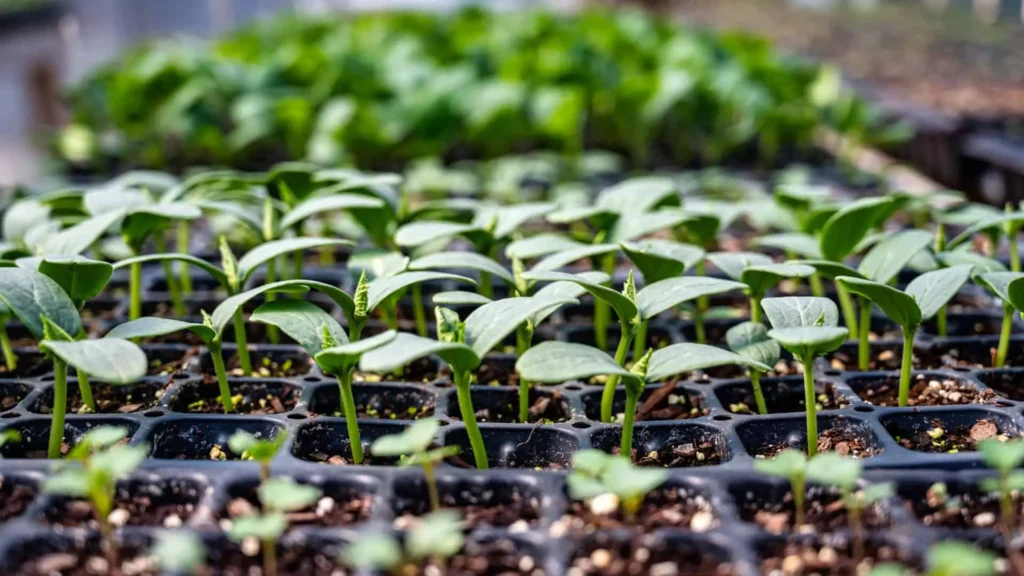
By combining the use of grow lights and heat mats in hydroponic systems, growers can create the optimal conditions for plant growth. Grow lights provide the necessary light energy for photosynthesis, while heat mats maintain root zone temperatures conducive to nutrient uptake. This synergistic approach ensures that plants receive the right amount of light and warmth, maximizing their growth potential.
• Grow lights simulate natural sunlight and provide the necessary light spectrum for photosynthesis.
• They emit essential wavelengths like blue and red light, promoting vegetative growth and stimulating flowering and fruiting.
• Adjusting the light spectrum allows growers to manipulate plant growth according to their specific needs.
• Grow lights compensate for inadequate natural light in indoor environments, enabling year-round cultivation.
• Heat mats help maintain consistent root zone temperatures, essential for nutrient uptake and overall plant health.
• They warm the substrate, stimulate root growth, and ensure plants have access to vital nutrients.
• Heat mats accelerate plant growth and enhance nutrient absorption, resulting in healthier plants.
• Combining grow lights with heat mats creates optimal conditions for plant growth in hydroponic systems.
Factors to consider when using grow lights and heat mats together.
When using grow lights and heat mats together in a hydroponic system, there are several important factors to consider in order to optimize plant growth and ensure the health of your plants.
Firstly, it is crucial to understand the specific needs of the plants you are growing. Different plants require different levels of light and warmth, so it is important to choose grow lights and heat mats that provide the appropriate intensity and temperature for your plants’ growth stages. For example, young seedlings may require less intense light and lower temperatures, while mature plants may need more intense light and higher temperatures for flowering and fruiting.
Additionally, it is vital to consider the compatibility of the grow lights and heat mats you are using. Some types of grow lights may produce more heat than others, so pairing them with heat mats could potentially create an excessively hot environment for your plants. It is important to choose grow lights and heat mats that complement each other in terms of heat output, or implement proper ventilation and temperature control measures to prevent overheating.
• Understand the specific needs of your plants
• Choose grow lights and heat mats that provide appropriate intensity and temperature for your plants’ growth stages
• Consider the compatibility of the grow lights and heat mats you are using
• Some types of grow lights may produce more heat than others, so choose ones that complement each other in terms of heat output
• Implement proper ventilation and temperature control measures to prevent overheating.
Watch the video to boost up your hydroponic garden with the help of grow light and heat mat.
Common mistakes to avoid when using grow lights and heat mats in hydroponic systems.
When it comes to using grow lights and heat mats in hydroponic systems, there are some common mistakes that gardeners should avoid. One of the most common mistakes is placing the grow lights too far away from the plants. Grow lights are designed to simulate natural sunlight, and if they are placed too far away, the plants may not receive the optimal amount of light. This can result in stunted growth, weak stems, and poor fruit or flower production. It is important to refer to the manufacturer’s guidelines for the recommended distance between the grow lights and the plants to ensure proper light penetration.
Another mistake to avoid is overheating the plants with heat mats. While heat mats can provide valuable warmth to promote germination and root growth, excessive heat can be detrimental to plants. It is important to monitor the temperature closely and ensure that it does not exceed the recommended range for the specific plant species. High temperatures can lead to heat stress, root damage, and even plant death. Using a thermostat or temperature controller can help maintain the ideal temperature and prevent overheating.
By being aware of these common mistakes and taking the necessary precautions, gardeners can maximize the benefits of using grow lights and heat mats in their hydroponic systems. These tools, when used correctly, can significantly enhance plant growth and yield, leading to a successful and rewarding gardening experience.
• Placing grow lights too far away from plants can result in stunted growth, weak stems, and poor fruit or flower production.
• Refer to the manufacturer’s guidelines for the recommended distance between grow lights and plants to ensure proper light penetration.
• Overheating plants with heat mats can be detrimental to their health.
• Monitor the temperature closely and ensure it does not exceed the recommended range for specific plant species.
• High temperatures can lead to heat stress, root damage, and even plant death.
• Use a thermostat or temperature controller to maintain the ideal temperature and prevent overheating.
The table below shows us how easily we can avoid some of the common mistakes while using grow light and heat mats:
| Mistake | Description | Prevention/Correction |
|---|---|---|
| Inadequate Light Intensity | Description: Providing insufficient light for plant growth. | Prevention/Correction: Use appropriate grow lights with the right spectrum and intensity for the specific plant growth stage. Regularly check and replace old bulbs. Ensure proper distance between lights and plants. |
| Incorrect Light Spectrum | Description: Using grow lights with an inappropriate spectrum for plant development. | Prevention/Correction: Choose grow lights with a spectrum suitable for both vegetative and flowering stages. LED lights often offer customizable spectra; adjust accordingly. |
| Overheating Plants | Description: Excessive heat from grow lights or heat mats can damage or stress plants. | Prevention/Correction: Monitor and control the temperature in the growing environment. Use cooling systems, adjust light intensity, or elevate lights to reduce heat transfer. |
| Poor Heat Mat Placement | Description: Incorrect placement of heat mats, leading to uneven temperature distribution. | Prevention/Correction: Place heat mats evenly beneath trays or containers. Use a thermostat to maintain consistent temperatures. Avoid direct contact between plants and heat mats. |
| Neglecting Air Circulation | Description: Insufficient air circulation around grow lights and heat mats can create hot spots. | Prevention/Correction: Install fans to promote air circulation. This helps maintain uniform temperatures and prevents localized overheating. |
| Ignoring Manufacturer Guidelines | Description: Disregarding guidelines provided by the manufacturers of grow lights and heat mats. | Prevention/Correction: Read and follow the manufacturer’s instructions regarding installation, usage, and maintenance. This ensures optimal performance and longevity of the equipment. |
| Inadequate Distance Between Light and Plants | Description: Placing grow lights too close to plants can cause burns or stunted growth. | Prevention/Correction: Follow recommended distance guidelines for the specific grow lights used. Adjust the height as plants grow to maintain an optimal light-to-plant distance. |
| Overreliance on Heat Mats | Description: Depending solely on heat mats for warmth without considering ambient room temperature. | Prevention/Correction: Use heat mats as supplemental heat and ensure the overall room temperature is suitable for plant growth. Use a thermometer to monitor and adjust as needed. |
| Neglecting Light and Heat Management | Description: Lack of regular monitoring and adjustment of light and heat settings. | Prevention/Correction: Establish a routine for checking and adjusting light intensity, spectrum, and heat levels. Regularly inspect equipment for any signs of wear or malfunction. |
Tips for maximizing the benefits of grow lights and heat mats in hydroponic systems.
To maximize the benefits of grow lights and heat mats in hydroponic systems, there are several key considerations to keep in mind. Firstly, it is essential to choose the right type and intensity of grow lights for your specific plants. Different plants have varying light requirements, so understanding their needs is crucial for optimal growth. Additionally, consider the size of your grow space and the number of plants you have, as this will determine the number of lights to purchase.
Proper placement of grow lights is also vital. Position them at an appropriate distance from the plants to ensure they receive the right amount of light without causing damage or stress. As a general rule, maintain a distance of 12-18 inches between the tops of your plants and the grow lights. However, always refer to the manufacturer’s instructions for specific recommendations.
Similarly, when using heat mats, it is important to understand the temperature requirements of your plants. Heat mats provide gentle warmth to the root zone, promoting faster germination and growth. However, excessive heat can also be detrimental to plants. Therefore, use a thermometer to monitor the temperature and adjust the heat mat accordingly. Place it beneath the seed trays or pots, ensuring even distribution of heat.
By paying attention to these factors and making small adjustments as needed, you can ensure that your plants receive the perfect balance of light and warmth, leading to accelerated growth and healthier plants in your hydroponic system.
• Choose the right type and intensity of grow lights based on your specific plants’ light requirements.
• Consider the size of your grow space and the number of plants to determine how many lights to purchase.
• Position grow lights at an appropriate distance from plants, typically 12-18 inches, to provide optimal light without causing damage or stress.
• Refer to manufacturer’s instructions for specific recommendations on light placement.
• Understand the temperature requirements of your plants when using heat mats.
• Use a thermometer to monitor the temperature and adjust the heat mat accordingly.
• Place heat mats beneath seed trays or pots for even distribution of warmth in the root zone.
Can I use regular lights instead of grow lights in my hydroponic system?
Regular lights are not recommended for hydroponic systems as they do not provide the specific spectrum of light that plants need for optimal growth. Grow lights are designed to emit the right wavelengths of light for photosynthesis and can maximize plant growth.
Do all plants require the same type of grow lights?
Different plants have different light requirements. Some plants, like leafy greens, can grow well under fluorescent grow lights, while others, like flowering plants, may require high-intensity discharge (HID) lights. It is important to choose the appropriate grow lights based on the specific needs of your plants.
Can I use heat mats without grow lights in my hydroponic system?
While heat mats can provide warmth to the root zone of plants, they do not replace the need for proper lighting. Plants still require light for photosynthesis, so it is recommended to use grow lights in conjunction with heat mats to ensure optimal growth.
Can I place grow lights and heat mats anywhere in my hydroponic system?
It is important to consider the placement of grow lights and heat mats to ensure optimal efficiency. Grow lights should be positioned at an appropriate distance from the plants to provide sufficient light without causing heat stress. Heat mats should be placed directly underneath the grow trays or pots to provide warmth to the root zone.
How long should grow lights and heat mats be used in a hydroponic system?
The duration of light and heat exposure depends on the specific needs of the plants and the stage of growth. Generally, grow lights are used for 12-16 hours a day during the vegetative stage and 8-12 hours a day during the flowering stage. Heat mats can be used consistently to maintain a consistent root temperature.
Can I use grow lights and heat mats for all types of hydroponic systems?
Yes, grow lights and heat mats can be used in various types of hydroponic systems, including ebb and flow, nutrient film technique (NFT), and deep water culture (DWC). However, it is important to adjust the size and intensity of the lights and mats according to the size and setup of the specific hydroponic system.

